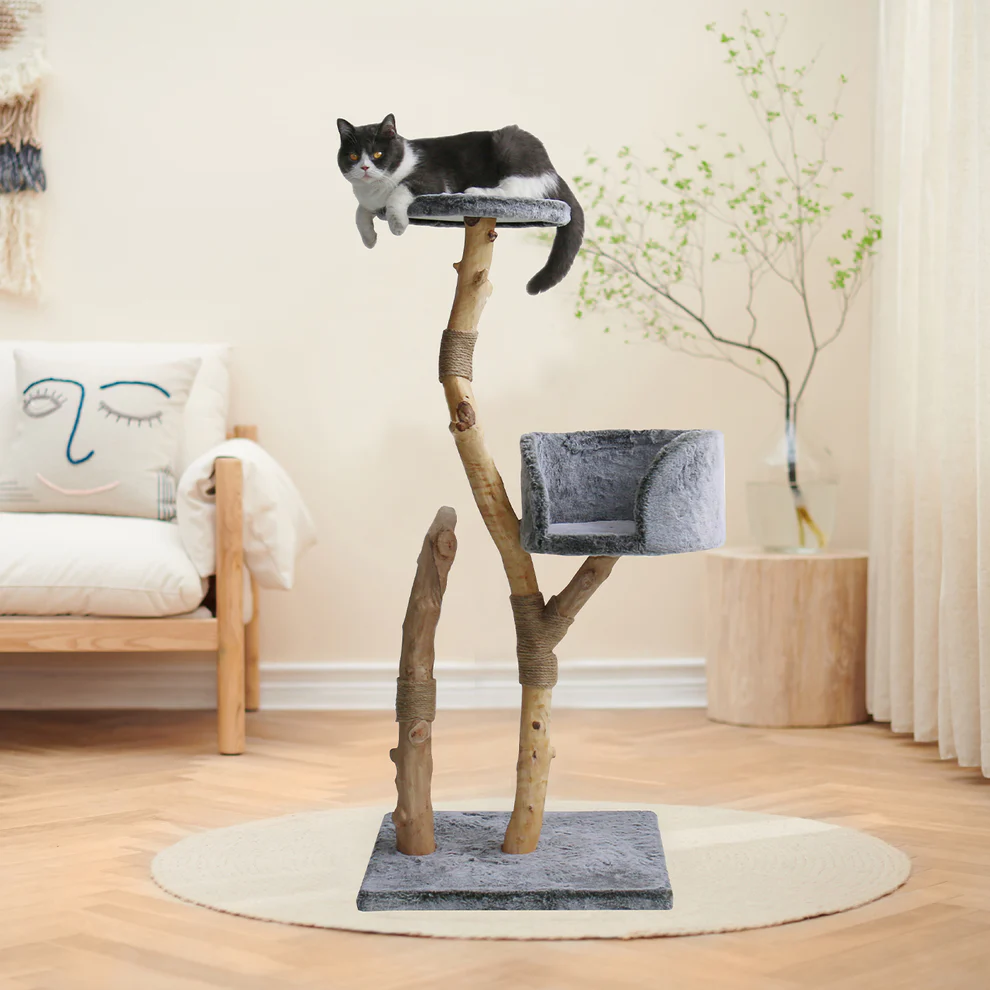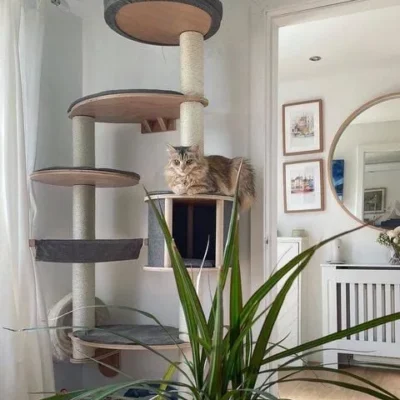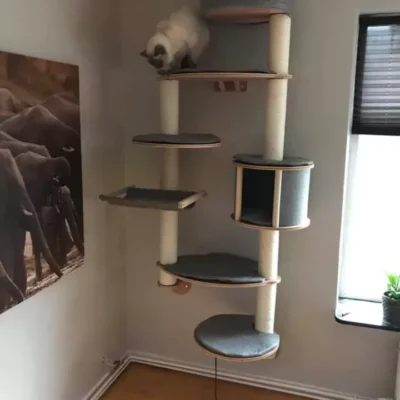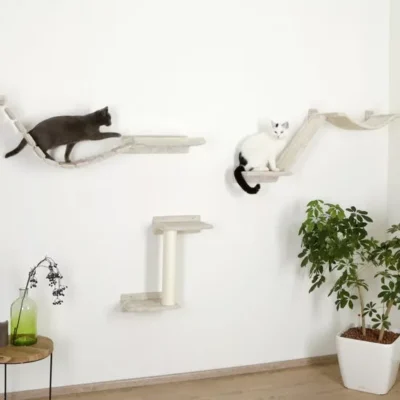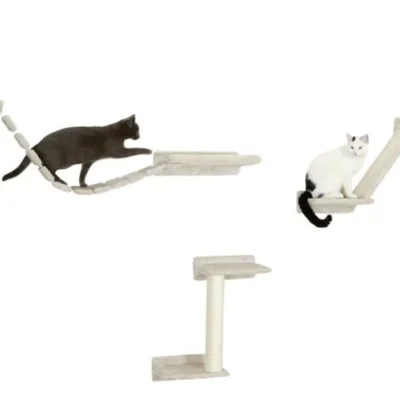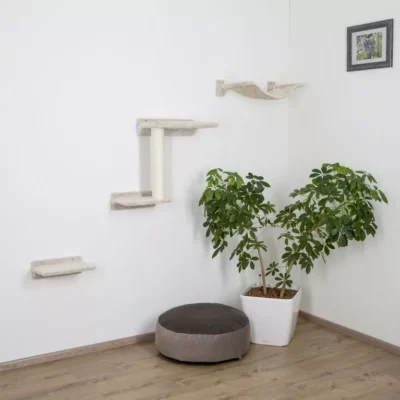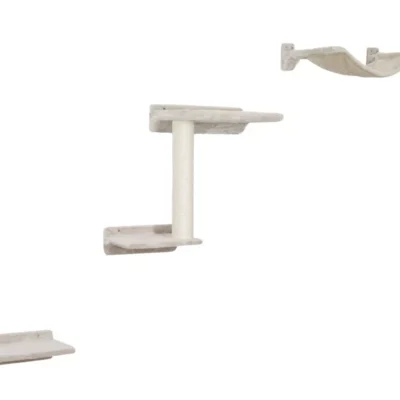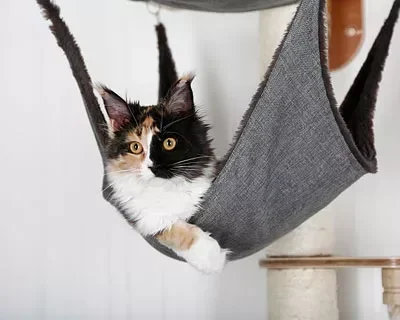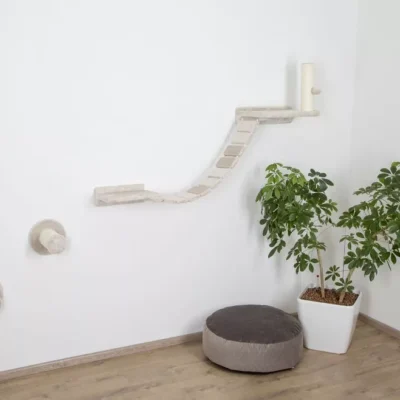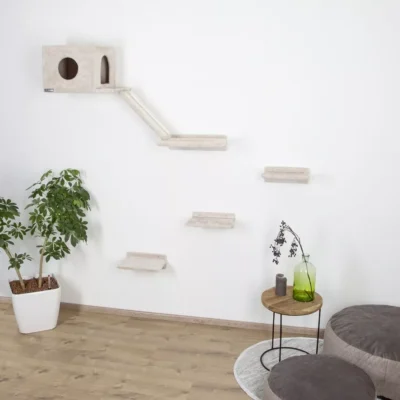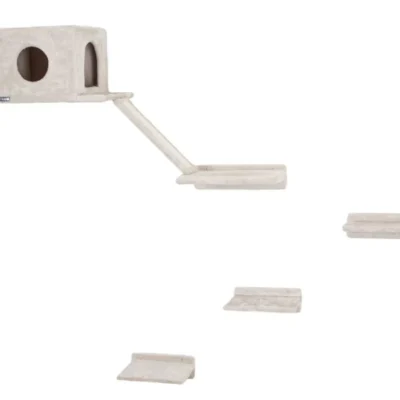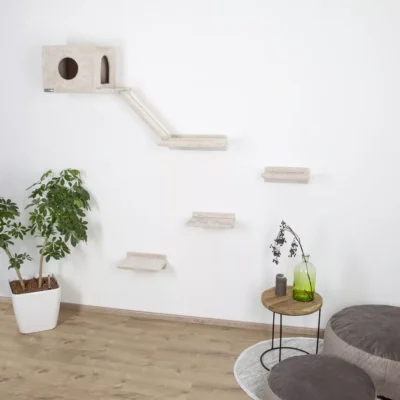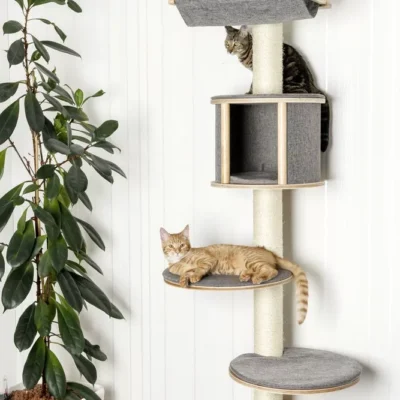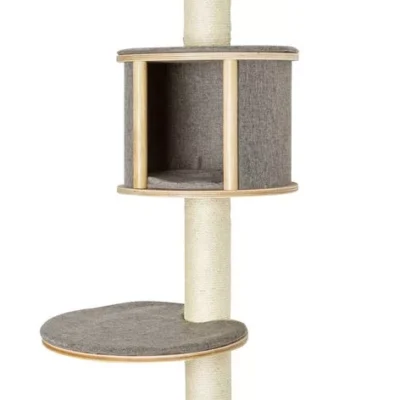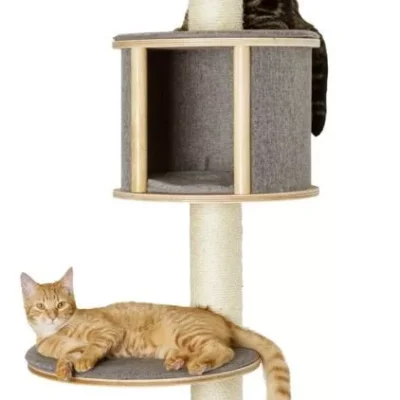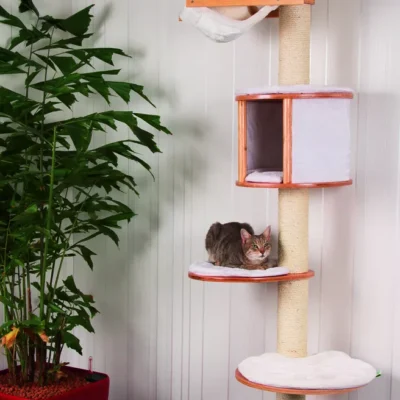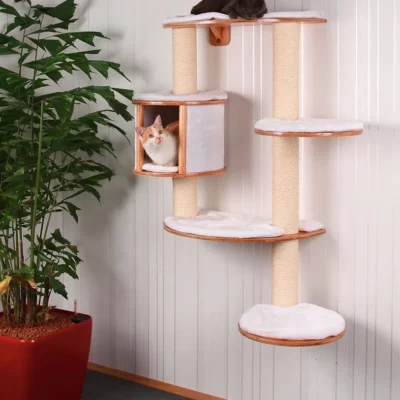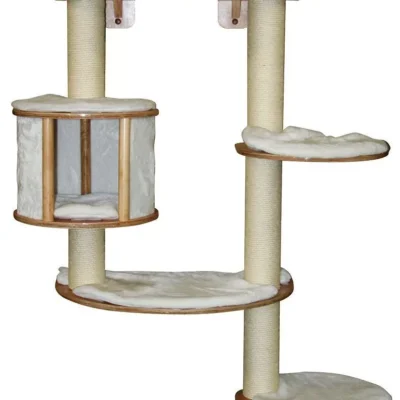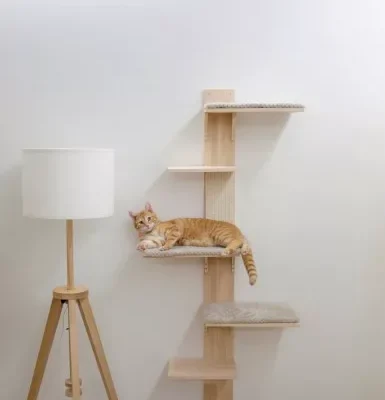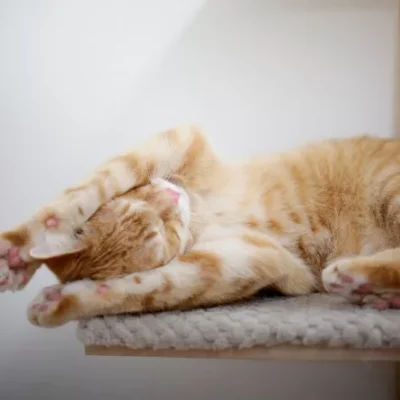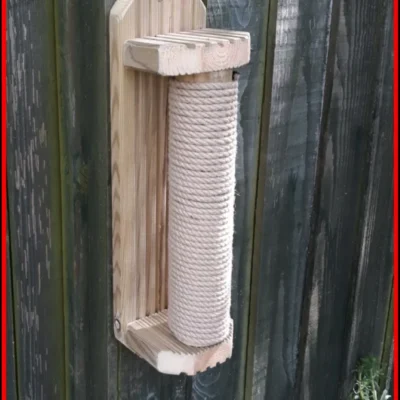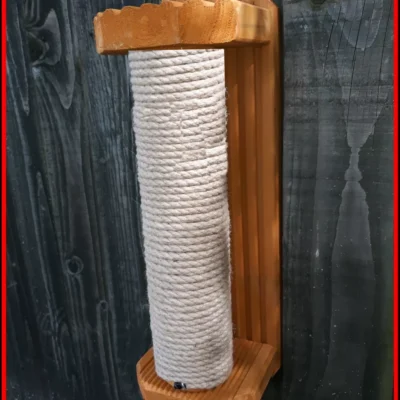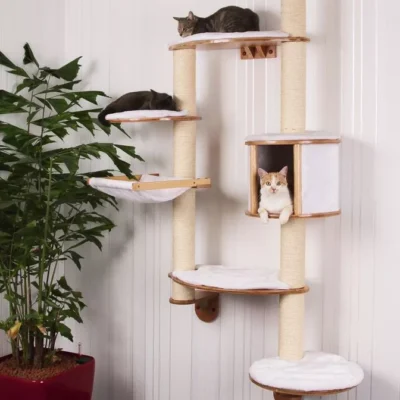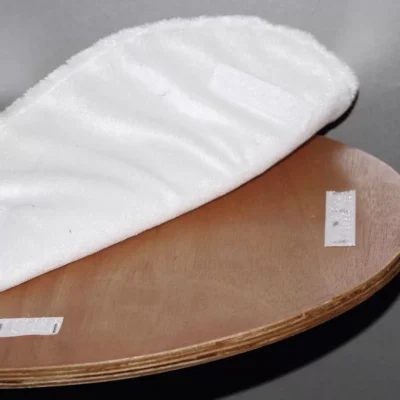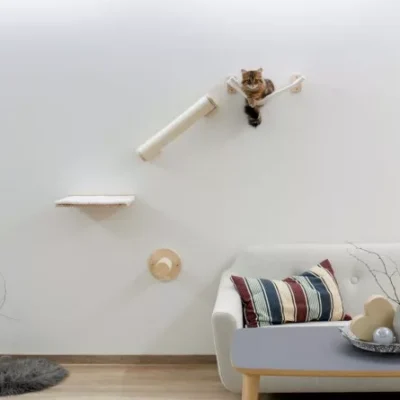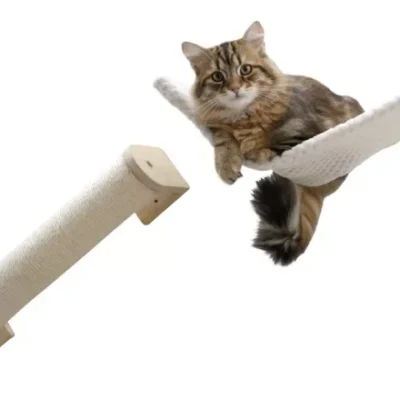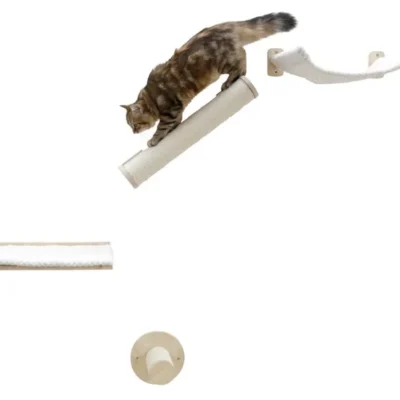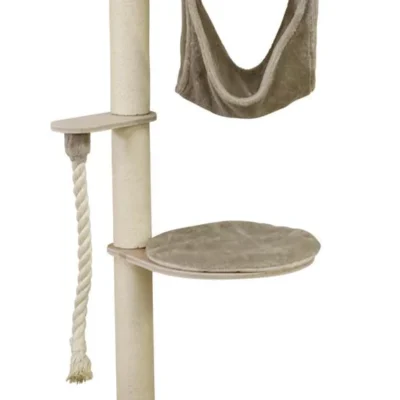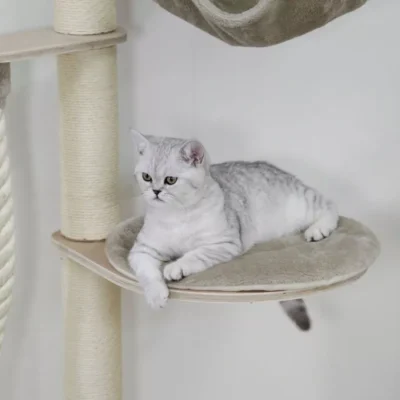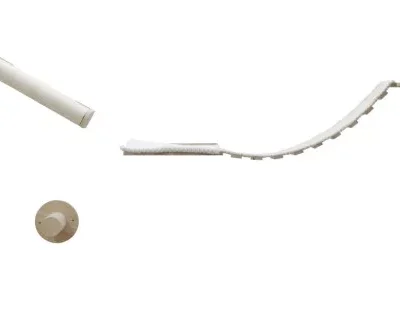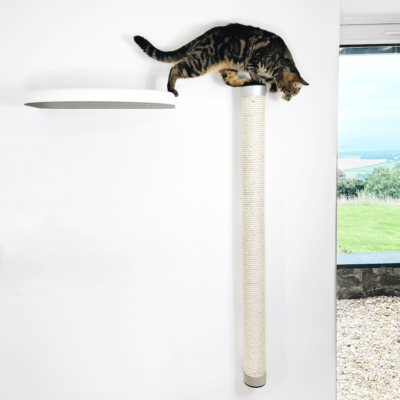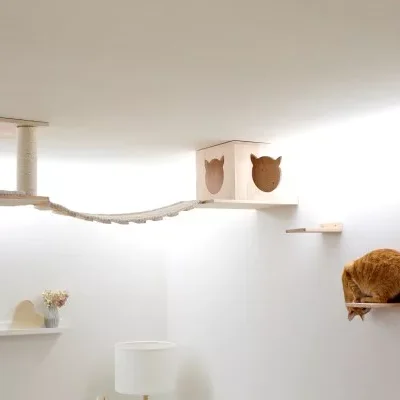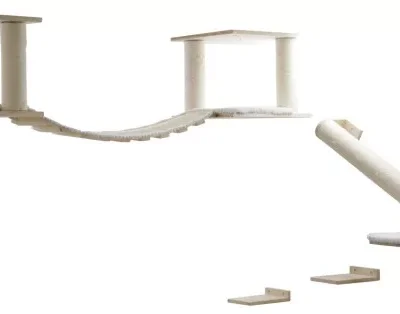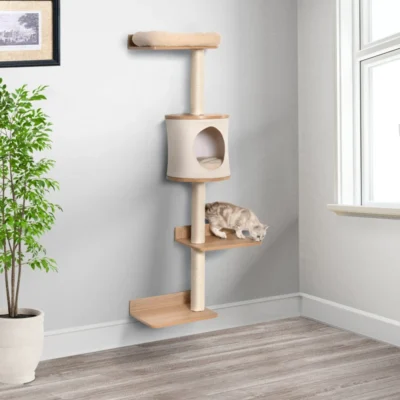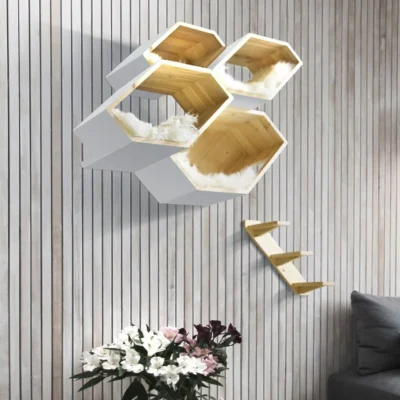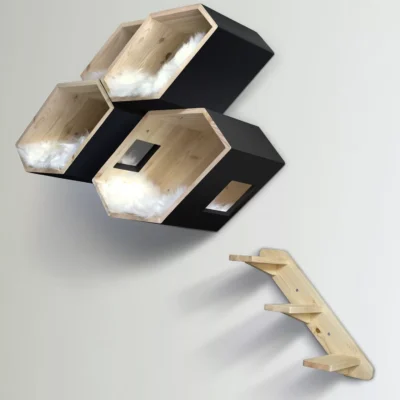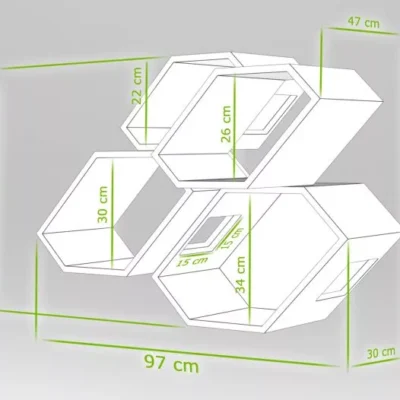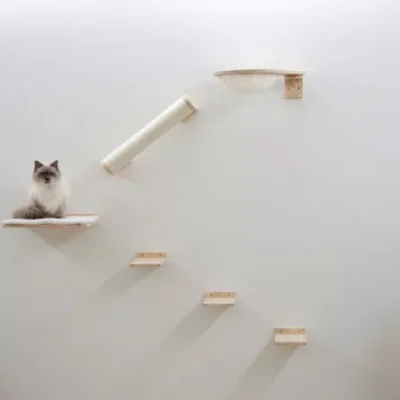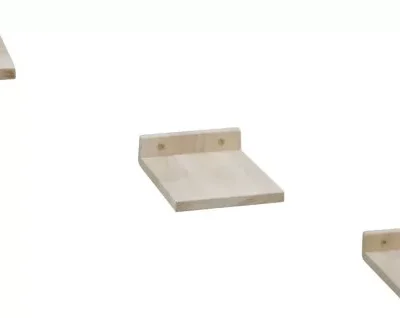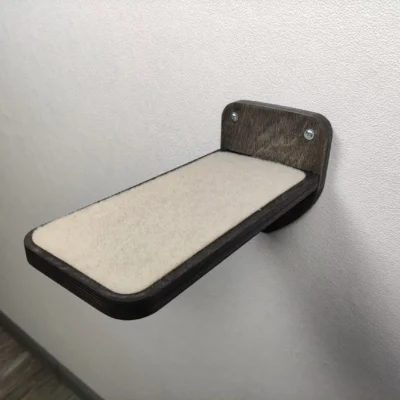0
Wall-mounted cat trees represent a creative evolution in cat furniture, merging practicality with modern design. Unlike traditional floor-standing models, these cat trees are affixed directly to the wall, creating an engaging vertical environment for cats. These structures typically incorporate elements like shelves, perches, and occasionally bridges or ladders, arranged to encourage cats to leap, climb, and relax at various heights.
The appeal of wall-mounted cat trees extends to both feline inhabitants and their human counterparts for several reasons. One of the most compelling advantages is their space-saving design. For smaller living spaces, such as apartments or compact homes, where floor space is at a premium, these cat trees are particularly beneficial. They provide a play and relaxation area for cats without consuming valuable floor area.
Additionally, wall-mounted cat trees often boast a more modern and minimalist design than their floor-standing counterparts, allowing them to blend seamlessly into home decor. This stylistic approach makes them an attractive addition to a room, enhancing the aesthetic appeal of the space.
Catering to a cat’s inherent desire to climb and observe from elevated positions, these cat trees offer vertical space for such activities. This not only satisfies their natural climbing instincts but also provides mental stimulation and physical exercise, contributing to their overall well-being.
Many wall-mounted cat trees come with the option for customization. This flexibility allows cat owners to tailor the layout to suit their specific space constraints and their cat’s individual preferences, creating a personalized climbing experience.
When incorporating a wall-mounted cat tree into your home, safety is a paramount concern. It’s crucial to anchor the tree’s components firmly to wall studs, ensuring they can withstand your cat’s weight. This prevents the possibility of the units loosening or collapsing. Components should be positioned at a height that’s accessible and safe for your cat. Moreover, their placement should not disrupt household movement or create potential hazards. Consistent inspection of all mounts, shelves, and attachments is necessary to identify any signs of wear or loosening. Prompt tightening and adjustments of fixtures are essential for ongoing safety. If you’re not confident in your installation skills, seeking the help of a professional is advisable to guarantee a safe and secure setup.
In conclusion, wall-mounted cat trees offer an innovative solution for cat owners seeking a functional, stylish, and space-efficient way for their cats to indulge in climbing and perching. However, ensuring a safe and stable installation is crucial for the enjoyment and safety of these unique cat playgrounds.
Choosing the Right Wall-Mounted Cat Tree
Choosing the right wall-mounted cat tree involves several important considerations to ensure it seamlessly fits into your home and meets your cat’s needs.
Begin by assessing the available space where you intend to install the cat tree. Measure both the height and width of the area to confirm it can accommodate the tree without overcrowding. Additionally, ensure that there are clear pathways for your cat to climb on and off the tree, and that the chosen location is easily accessible to them. Different wall types may require specific mounting hardware, so consider the construction of your walls.
To make a suitable choice, take your cat’s characteristics into account. Age plays a significant role, as kittens may prefer lower shelves, while active adult cats might enjoy taller structures. Seniors may appreciate accessible perches. Consider your cat’s size and select shelves and perches that provide ample space for them to stretch out and lounge comfortably. Matching the tree’s design to your cat’s activity level is crucial; active cats may benefit from more complex structures with various levels, while calmer cats might prefer simpler designs.
When evaluating wall-mounted cat trees, prioritize material quality. Look for trees made of durable materials like solid wood, sturdy particleboard, or metal brackets. Avoid options with flimsy or weak materials that may not withstand long-term use. Assess the surface materials your cat will come into contact with; they should be comfortable and easy to clean. Common choices include sisal, carpet, and soft faux fur. Examine the overall design, including the layout of shelves, perches, and hideaways. Some designs feature built-in scratching posts or cubbies for cats to explore. Consider the aesthetic appeal as well, selecting a cat tree that complements your home’s decor. Various designs, from modern to rustic or minimalist, are available to match different interior styles. Additionally, some wall-mounted cat trees offer customization options, allowing you to adjust the layout to suit your cat’s preferences and the available space.
By carefully considering your space, your cat’s characteristics, and the materials and design of wall-mounted cat trees, you can make an informed choice that not only enhances your home but also provides your feline companion with a safe and enjoyable climbing and perching experience.

